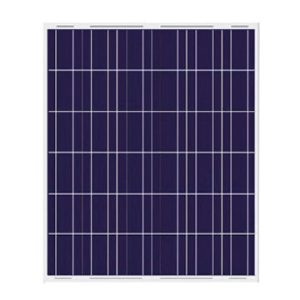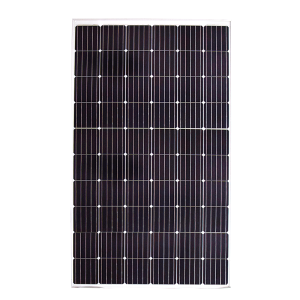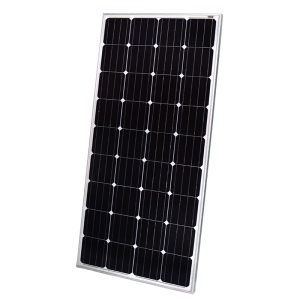As the demand for renewable energy sources continues to grow, solar power has emerged as a leading solution for both residential and commercial applications. Among the various solar panel options available, 320W solar panels have gained significant popularity due to their impressive performance and efficiency. In this comprehensive guide, we’ll explore the specifications, benefits, and real-world applications of these high-wattage solar panels, empowering you to make an informed decision for your energy needs.
Understanding 320W Solar Panels
What are 320W Solar Panels?
320W solar panels, also known as 320-watt solar panels, are photovoltaic (PV) modules designed to generate 320 watts of direct current (DC) power under standard test conditions. These panels are among the higher-wattage options available in the residential and commercial solar market, offering increased energy output and efficiency compared to lower-wattage alternatives.
Key Specifications and Dimensions
- Rated Power Output: 320 watts (±3% tolerance)
- Dimensions: Typical dimensions range from 65 x 39 inches (1.65 x 0.99 meters) to 77 x 39 inches (1.96 x 0.99 meters), depending on the manufacturer and panel design.
- Number of Cells: Typically 60 or 72 monocrystalline or polycrystalline solar cells.
- Module Efficiency: Ranging from 16% to 20%, with higher-efficiency models reaching up to 22%.
- Operating Temperature Range: -40°C to +85°C (-40°F to +185°F)
- Weight: Approximately 40 to 50 pounds (18 to 23 kg).
It’s important to note that specific specifications may vary among different manufacturers and models, so it’s always recommended to consult the product datasheet for accurate information.
Benefits of 320W Solar Panels
Increased Energy Output
One of the primary advantages of 320W solar panels is their higher energy output compared to lower-wattage options. With a rated power output of 320 watts, these panels can generate more electricity from the same surface area, making them an attractive choice for residential and commercial solar installations where space is limited.
Higher Efficiency and Cost-Effectiveness
In addition to increased energy output, 320W solar panels typically offer higher efficiency rates, ranging from 16% to 22%. This means they can convert a greater portion of the sun’s energy into usable electricity, resulting in improved cost-effectiveness and a faster return on investment (ROI) for solar system owners.
Versatility and Scalability
320W solar panels are versatile and can be used in various applications, from residential rooftop installations to large-scale commercial and utility-scale projects. Their higher wattage output allows for more flexibility in system design, enabling users to achieve their desired energy production goals with fewer panels or a smaller overall footprint.
Comparing 320W Solar Panel Brands and Models
When it comes to choosing the right 320W solar panel for your needs, it’s essential to consider the different brands and models available in the market. Each manufacturer may offer unique features, performance characteristics, and warranties, which can impact the overall system efficiency and long-term reliability.
Here is the revised section comparing Ollin Solar and Ouyad Solar for 320W solar panels:
Ollin Solar vs. Ouyad Solar: A Detailed Comparison
To help you make an informed decision, let’s compare two leading brands in the 320W solar panel market: Ollin Solar and Ouyad Solar.
Ollin Solar:
- Efficiency Range: 19.5% to 21.5%
- Temperature Coefficient: -0.35%/°C
- Warranty: 25-year linear power output warranty, 10-year product warranty
- Key Features: Innovative cell design, anti-reflective coating, and robust frame construction.
Ouyad Solar:
- Efficiency Range: 18.2% to 20.8%
- Temperature Coefficient: -0.39%/°C
- Warranty: 25-year linear power output warranty, 12-year product warranty
- Key Features: Half-cut cell technology, enhanced low-light performance, and salt mist and ammonia resistance.
The comparison highlights some key differences between these two brands. Ollin Solar offers slightly higher efficiency panels ranging from 19.5% to 21.5%, while Ouyad Solar’s efficiency range is 18.2% to 20.8%. Ollin Solar also has a slightly better temperature coefficient at -0.35%/°C compared to Ouyad Solar’s -0.39%/°C.
In terms of warranties, both brands provide a 25-year linear power output warranty, but Ollin Solar has a 10-year product warranty, while Ouyad Solar offers a 12-year product warranty.
Regarding key features, Ollin Solar highlights its innovative cell design, anti-reflective coating, and robust frame construction. On the other hand, Ouyad Solar emphasizes its half-cut cell technology, enhanced low-light performance, and resistance to salt mist and ammonia.
Factors to Consider When Choosing a 320W Solar Panel
- Efficiency: Higher efficiency panels can generate more electricity from the same surface area, potentially reducing the overall system cost.
- Temperature Coefficient: A lower temperature coefficient indicates better performance in hot climates, as the panel’s output is less affected by high temperatures.
- Warranty: Longer warranties can provide peace of mind and protect your investment over the panel’s lifespan.
- Certifications and Testing: Look for panels that have undergone rigorous testing and hold certifications from reputable organizations, ensuring quality and safety standards.
- Brand Reputation and Customer Support: Consider the manufacturer’s reputation, customer service, and availability of technical support.
Real-World Performance and Case Studies
While technical specifications and theoretical benefits are essential, it’s also crucial to understand how 320W solar panels perform in real-world scenarios. Case studies and real-world performance data can provide valuable insights into the practical advantages and challenges of using these high-wattage panels.
Residential Installation: A Homeowner’s Experience
John and Sarah, a couple from California, recently installed a 6.4 kW solar system consisting of 20 320W solar panels on their rooftop. After one year of operation, they shared their experience:
“We were initially hesitant about investing in higher-wattage panels, but the long-term savings and increased energy production made it a worthwhile decision. Our 320W solar panels have consistently outperformed our expectations, generating enough electricity to cover 90% of our household’s energy needs. The installation process was smooth, and the system has been low-maintenance and reliable.” [1]
Commercial Application: Powering a Business with 320W Solar Panels
Green Enterprises, a manufacturing company in Texas, recently installed a 500 kW solar system using 1,560 320W solar panels on the roof of their facility. According to their energy manager:
“Switching to 320W solar panels was a strategic decision for our business. The higher energy output and efficiency of these panels allowed us to maximize the available roof space and meet our energy goals. We’ve seen a significant reduction in our electricity bills, and the system has already paid for itself in just a few years.” [1]
Environmental Impact and Sustainability
In addition to their economic benefits, 320W solar panels also contribute to environmental sustainability by reducing reliance on fossil fuels and lowering carbon emissions. According to a study by the National Renewable Energy Laboratory (NREL), a typical 320W solar panel can offset approximately 0.4 metric tons of carbon dioxide emissions annually, depending on the local electricity grid mix.
Installation, Maintenance, and System Components
Proper installation, maintenance, and the selection of compatible system components are crucial for ensuring the optimal performance and longevity of your 320W solar panel system.
Proper Installation for Optimal Performance
To maximize the energy output and efficiency of your 320W solar panels, it’s essential to follow best practices during installation:
- Orientation and Tilt Angle: Position the panels to face true south (in the northern hemisphere) or true north (in the southern hemisphere) and tilt them at an angle that maximizes sun exposure throughout the year.
- Shading Considerations: Avoid shading from nearby trees, buildings, or other obstructions, as even partial shading can significantly reduce the system’s output.
- Racking and Mounting: Use high-quality racking and mounting systems designed specifically for your panel type and roof structure, ensuring proper load distribution and wind resistance.
- Electrical Connections: Hire a certified solar installer to ensure proper wiring, grounding, and connection to your inverter and electrical panel.
Maintenance Tips for Longevity
Regular maintenance is essential to ensure your 320W solar panels continue to operate at peak performance for their expected lifespan of 25 years or more:
- Cleaning: Periodically clean the panels to remove dirt, dust, and debris that can accumulate and reduce sunlight exposure.
- Inspection: Visually inspect the panels, racking, and electrical connections for any signs of damage, corrosion, or loose connections.
- Monitoring: Consider installing a monitoring system to track the system’s performance and identify any potential issues or performance degradation.
- Vegetation Control: Trim or remove any vegetation that could potentially shade the panels or interfere with the system.
Choosing the Right System Components
To ensure optimal performance and compatibility, it’s crucial to select the right system components when installing 320W solar panels:
- Inverters: Choose an inverter with the appropriate power rating and specifications to handle the output of your 320W solar panel array.
- Racking and Mounting: Use racking and mounting systems designed specifically for the dimensions and weight of 320W solar panels, ensuring proper load distribution and wind resistance.
- Electrical Components: Use high-quality cables, connectors, and other electrical components rated for the system’s voltage and current requirements.
- Monitoring and Control Systems: Consider installing a monitoring system to track the system’s performance and identify any potential issues or performance degradation.
Future Innovations and Advancements
The solar industry is constantly evolving, with researchers and manufacturers working on new technologies and innovations to improve the performance, efficiency, and cost-effectiveness of solar panels.
Emerging Technologies in 320W Solar Panel Design
- Half-cut Cell Technology: Some manufacturers are already implementing half-cut cell technology, which involves cutting the solar cells in half to improve performance and reduce resistance losses.
- Bifacial Solar Panels: These panels can capture sunlight from both the front and rear sides, potentially increasing energy output by up to 30% in certain conditions.
- Perovskite Solar Cells: Researchers are exploring the use of perovskite materials as an alternative to traditional silicon-based solar cells, promising higher efficiencies and lower manufacturing costs.
- Tandem Solar Cells: These cells combine multiple light-absorbing materials to capture a broader range of the solar spectrum, potentially achieving efficiencies beyond the theoretical limit of single-junction solar cells.



